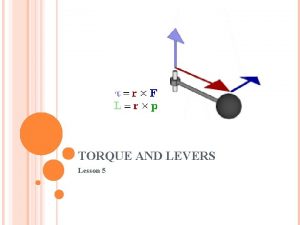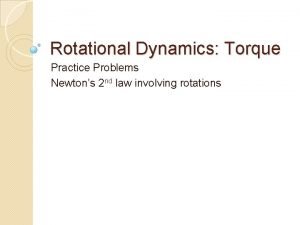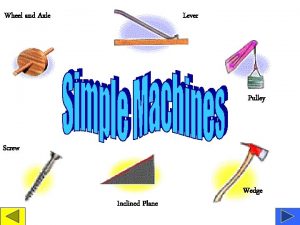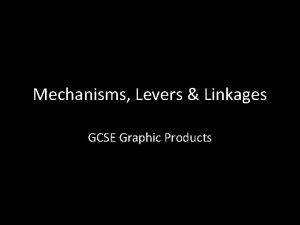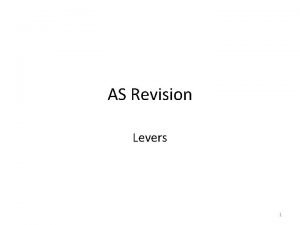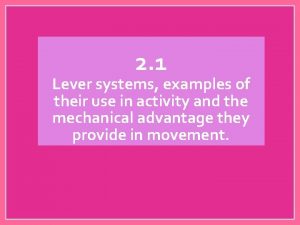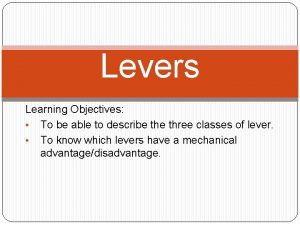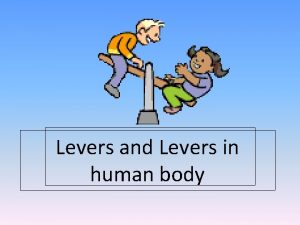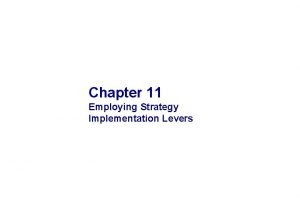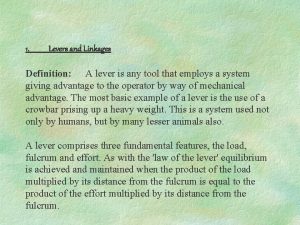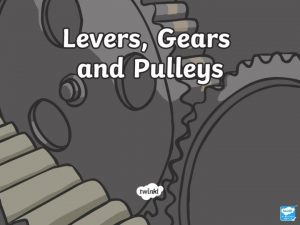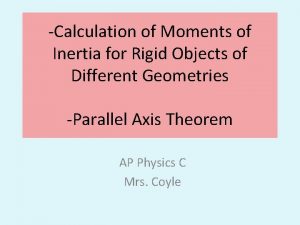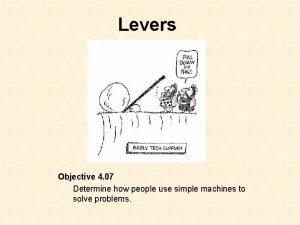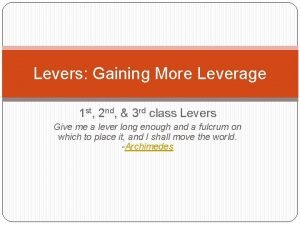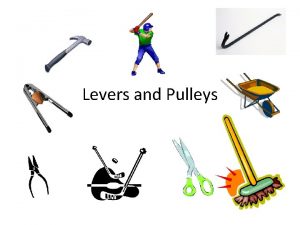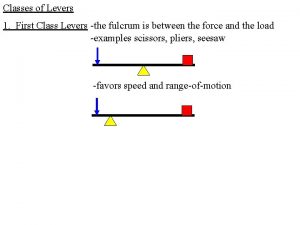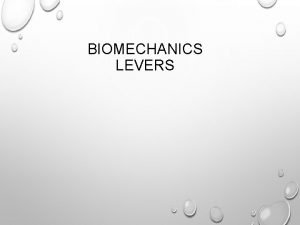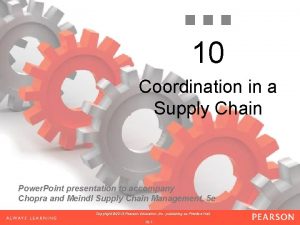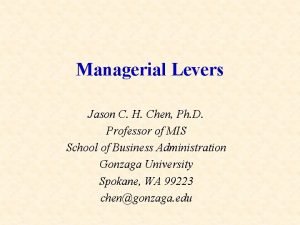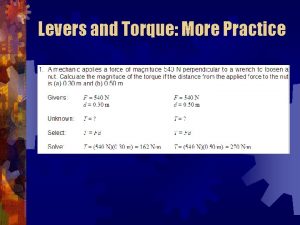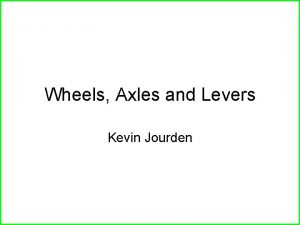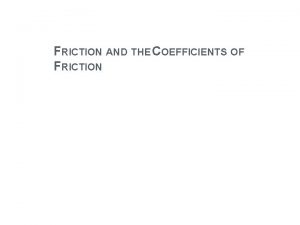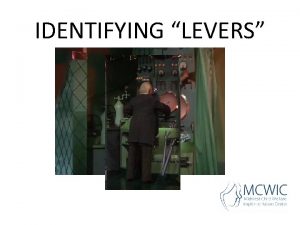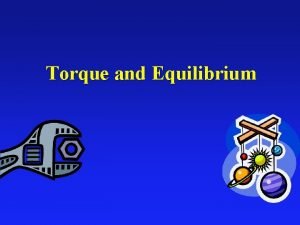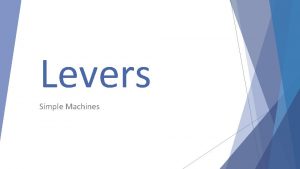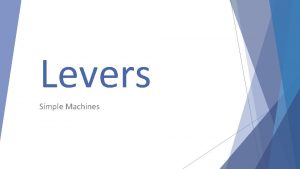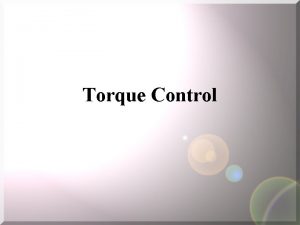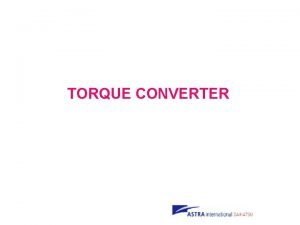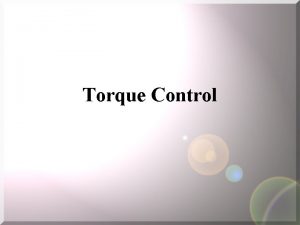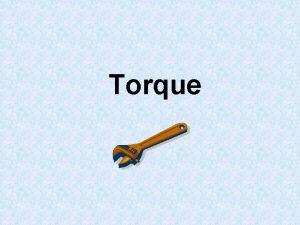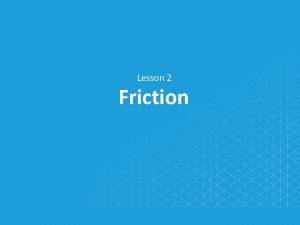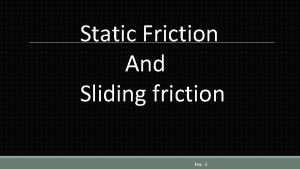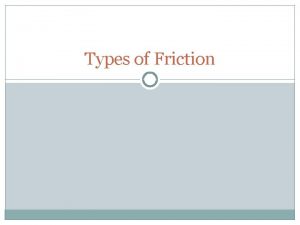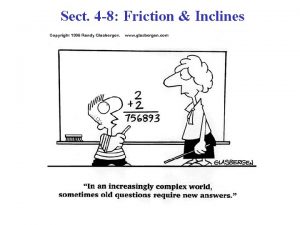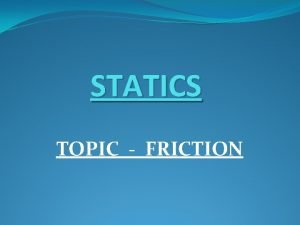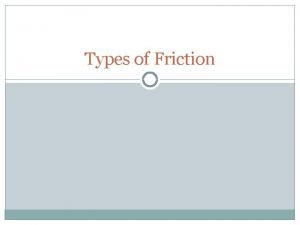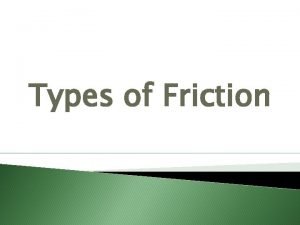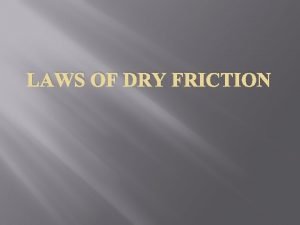Practice 2Force Friction Torque and Levers Machines Mr

























- Slides: 25

Practice #2—Force, Friction, Torque, and Levers Machines Mr. Burleson geaux 15@hotmail. com 1

Agenda Introduction and Rules Basics of Machines Practical Homework 2

Introduction and Rules Come prepared to practices with completed homework and all your questions Listen and participate. Be willing to study on your own and do more work than assigned 3

Machines (B) Rules Team of 2 No Eye Protection Required Device must be impounded Part 1 (Written Test) 45% of score Simple Machine Concepts Simple Machine Calculations Simple Machine History is no longer included Part 2 (Device Testing) 55% of score Two Ratio Scores (15% each) One Time Score (15%) Chart Score (10%) Only five types of machines Levers (all three classes) Inclined Plane Wedge Pulley (up to two double pulleys) Wheel and Axle Prohibited topics Compound machines Dynamic Calculations Material Strengths Potential/Kinetic Energy Coefficient of Friction Screw Simple Machines Angle of Repose 4 4

Machines (C) Rules Team of 2 No Eye Protection Required Device must be impounded Part 1 (Written Test) 45% of score Sim/Compound Machine Concepts Sim/Compound Machine Calcs Sim/Compound Machine History is no longer included All six types of simple machines Levers (all three classes) Inclined Plane Wedge Pulley (up to two double pulleys) Wheel and Axle Screw Prohibited topics Dynamic Calculations Material Strengths Angle of Repose Part 2 (Device Testing) 55% of score Two Ratio Scores (15% each) One Time Score (15%) Chart Score (10%) 5

Scoring for Machines Exam Score (ES) is worth maximum 45 points (45 points awarded to highest test score) Time Score (TS) = ((240 -time)/240*15 points (max 15 points) Ratio Score (R 1 and R 2)=(1 -(abs(AR-MR)/AR))*15 points (max 2 x 15 = 30 points) Chart Score (CS) is worth 10 points (max 10 points) 2 points for including data spanning the possible mass range 2 points for including at least 10 data points in each data series 2 points for proper labeling (e. g. title, team name, units) 2 points for distinct graphs (0. 5 points each up to 2 points) 2 point for including a labeled device diagram Violations Competition violate TS, R 1, and R 2 are multiplied by 0. 9 Construction violation, if resolved during competition block or miss impound TS, R 1, and R 2 are multiplied by 0. 7 Team with no device, no ratio estimate or do not make an HONEST attempt TS, R 1, and R 2 all marked zero Final Score (FS)=ES+MS+TS+CS (maximum of 100 points) Tie Breakers Best ES score Best TS score Best R 1 Best R 2 6

Lever Basics of Simple Machines Inclined Plane Wheel and Axle Wedge Pulley Screw, not included in Machines (B) 7

Basic Definition of Simple Machines A simple machine is an elementary device that has a specific movement (often called a mechanism), which can be combined with other devices and movements to form a machine. The idea of a "simple machine" originated with the Greek philosopher Archimedes around the 3 rd century BC, who studied the "Archimedean" simple machines: lever, pulley, and screw Thus simple machines are considered to be the "building blocks" of more complicated machines. A bicycle has wheels, levers, and pulleys

Mechanical Advantage A machine has an applied force (or effort) that works against a load force. If there are no friction losses, the work done on the load is equal to the work done by the applied force. This allows an increase in the output force at the cost of a proportional decrease in the distance moved by the load. The ratio of the output force to the input force is the mechanical advantage of the machine. 9

Efficiency Machines lose energy through friction, deformation and wear, which is dissipated as heat. This means the power out of the machine is less than power in. The ratio of power out to power in is the efficiency η of the machine, and is a measure of the energy losses. 10

What is a Lever? A lever is a machine consisting of a beam or rigid rod pivoted at a fixed hinge, or fulcrum The word comes from the French lever, "to raise", cf. a levant. A lever amplifies an input force to provide a greater output force, which is said to provide leverage. The ratio of the output force to the input force is the ideal mechanical advantage of the lever. 11

Building a Good Lever Ensure device fits into the bound box, 1 m x 0. 5 m Ensure device is sturdy Ensure Division B Beam is less than 80 cm no matter how measured (include anything on the ends) Ensure both Division C beams are less than 40 cm no matter how measured (include anything on the ends) Add counterweight to balance the lever (may need to be redone prior to each measurement) and use a level Make sure it can handle the masses (15 cm x 20 cm) Reduce any sources of loss in your lever system Strong, unbending, but very light parts especially the beams, strings, etc. For rotating points reduce friction through metal/metal interfaces, bearings, and lubrication Put blank paper to mark different ratio results and write clearly based upon multiple measurements Build a transport box for protection and impound (have it fit within the bound box or 1 m x 0. 5 m) Practice first for accuracy and then over time for increased speed Initial determination of which one is heavier and which one is lighter is critical for precise measurements https: //slideplayer. com/slide/1544490/ Counterweight Low Loss Fulcrum Point Ratio labels 12

Building a Good Lever (cont) Beam can be as simple as a meterstick or yard stick (lightweight and won’t bend) Make sure that there is enough room for the masses to hang underneath (over 20 cm height, with maximum 15 cm width and 15 cm length). Focus on the Regionals ratios first Counterweight Low Loss Fulcrum Point Ratio labels Division B 4: 1 and Division C 8: 1 Get the beam well balanced first Make sure it can handle the full ratios Get all your Chart Score Draw your diagram Make multiple measurements to show your marked your ratio labels and do your charts If you make it to State, move your fulcrum point and remeasure for those ratios Division B 5. 5: 1 and Division C 10: 1 Practice for accuracy first and after you have 99% accuracy start working on speed by dividing tasks and practicing https: //slideplayer. com/slide/1544490/ 13

Classes of Levers Class 1: Fulcrum in the middle: the effort is applied on one side of the fulcrum and the resistance on the other side A crowbar or a pair of scissors. Class 2: Resistance in the middle: the effort is applied on one side of the resistance and the fulcrum is located on the other side. A wheelbarrow, a nutcracker, a bottle opener or the brake pedal of a car. Mechanical advantage is greater than 1. Class 3: Effort in the middle: the resistance is on one side of the effort and the fulcrum is located on the other side A pair of tweezers or the human mandible. Mechanical advantage is less than 1. 14

IMA of Lever/Law of the Lever If a and b are distances from the fulcrum to points A and B and let the force FA applied to A is the input and the force FB applied at B is the output, the ratio of the velocities of points A and B is given by a/b, so we have the ratio of the output force to the input force, or mechanical advantage, is given by

Practical Get a ruler or meter/yardstick—this is your lever arm Balance the lever arm on something immobile (like your finger or anything with an edge pointing up Where does it balance? What happens when you move it from away from the balance point? Now try to balance something that fits on the ruler or meter stick (like an eraser, something that won’t roll) Put one on each side of the balanced lever Put one closer than the other Put them the same distance apart 16

What is a pulley? A pulley is a wheel on an axle that is designed to support movement of a cable or belt along its circumference. Pulleys are used in a variety of ways to lift loads, apply forces, and to transmit power. Also called a block, sheave, or drum and may have a groove between two flanges around its circumference. The drive element of a pulley system can be a rope, cable, belt, or chain that runs over the pulley inside the groove. 17

Pulleys linked by a circular chain or belt Below is a pulley and belt system, which operates like a Wheel and Axle, but is classified a pulley system Pulleys have different axles Motion is circular/angular not linear The IMA is dependent upon the ratio of the wheels/pulleys versus the number of lines connecting One wheel/pulley is the driver and one is the driven 18

What is a Wheel and Axle is a simple machine that is generally considered to be a wheel attached to an axle so that these two parts rotate together in which a force is transferred from one to the other. The IMA is caused by the difference in radius between the wheel and axle Either the Wheel or Axle may be the driving force 19

Gears are also a Wheel and Axle type of machine A gear or cogwheel is a rotating machine part having cut teeth, or cogs, which mesh with another toothed part in order to transmit torque Usually the teeth on the one gear of identical shape, and often also with that shape (or just width) on the other gear. Two or more gears working in tandem are called a transmission and can produce a mechanical advantage through a gear ratio and thus may be considered a simple machine. 20

What is a Wedge? A wedge is a triangular shaped tool, a compound and portable inclined plane, and one of the six classical simple machines. It can be used to separate two objects or portions of an object, lift up an object, or hold an object in place. It functions by converting a force applied to its blunt end into forces perpendicular (normal) to its inclined surfaces. 21

What is an Inclined Plane? An inclined plane is a flat supporting surface tilted at an angle, with one end higher than the other, used as an aid for raising or lowering a load Can include friction (static only) for Complex Machines (C) or be frictionless for either event 22

What is a Screw? A screw is a mechanism that converts rotational motion to linear motion, and a torque (rotational force) to a linear force Last simple machine invented, appeared first in ancient Greece It can be seen that the mechanical advantage of a screw depends on its lead, P The smaller the distance between its threads, the larger the IMA However most actual screws have large amounts of friction

Differences Between Simple and Complex/Compound Machines Complex Machines includes everything in Simple Machines plus the following: Screw Problems Complex Machines with two or more simple machines working together as one device Friction problems Potential/Kinetic energy problems Measurement device is a Class 1 lever directly in series to a Class 2 Lever, each with a beam less than 50 cm. Scoring is the same for both events. 24

Homework #2 Do the Homework Generator problems for Level 2 and Lever Level 3 Figure out your design for you lever Draw some diagrams and think about materials 25
 Torque and levers
Torque and levers Ali is climbing where does he need high friction
Ali is climbing where does he need high friction Rotational dynamics practice problems
Rotational dynamics practice problems Lever and inclined plane
Lever and inclined plane Lever linkage mechanisms
Lever linkage mechanisms Third class lever
Third class lever 1st class lever examples in sport
1st class lever examples in sport Disadvantages of second class levers
Disadvantages of second class levers Movable pulley examples in human body
Movable pulley examples in human body Lever for strategy implementation
Lever for strategy implementation Definition of lever
Definition of lever Gears pulleys and levers
Gears pulleys and levers Inertia of a rod formula
Inertia of a rod formula Myeplg website
Myeplg website Three types of levers
Three types of levers Excavator control levers
Excavator control levers Fle 123 levers
Fle 123 levers 2 nd class lever
2 nd class lever Orders of levers
Orders of levers Fle levers
Fle levers Levers gcse
Levers gcse First class
First class Lever biomechanics
Lever biomechanics Behavioral obstacles in supply chain
Behavioral obstacles in supply chain In anatomic lever systems the fulcrum is the
In anatomic lever systems the fulcrum is the Document solutions
Document solutions
